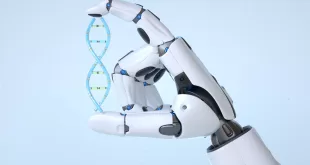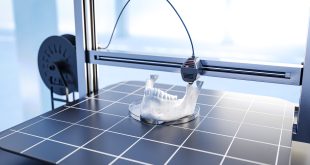Keeping up with the latest developments and innovations and their potential impacts on science and people
By Shelby Huatala
Science is an ever-evolving pursuit that challenges professionals working within its fields to constantly and consistently research in order to keep up with the latest developments and innovations. To help alleviate this challenge, we’ve researched a plethora of unique new materials that are being explored and used, determining the five that pose the greatest potential to further advances within medicine and life science.
1. Implantable device to treat chronic illnesses
A soft, thin, and strong implantable device developed in order to detect and treat chronic illnesses, such as spinal cord injuries and Parkinson’s disease, is getting closer to clinical testing. The new technology has been developed by a research team that includes Dr. Tuan-Khoa Nguyen, Professor Nam-Trung Nguyen, and Dr. Hoang-Phuong Phan from Australia’s Griffith University, UNSW Sydney and Queensland Micro Nanotechnology Centre.
Using silicon carbide technology nanomembranes and silicon dioxide, the device will be able to operate in extreme environments and be stable, flexible, soft, and functional—which is what is needed in order to work with human tissue. This device, once implanted, will last several decades.
The implantable device has a promising future with respect to its use to treat chronic diseases. The device will also be able to diagnose and provide the correct treatment for diseases aided by its electrical stimulations that pick up any abnormalities. The research team is still a long way from making this a reality, but once successful it will help people suffering from chronic illnesses while also advancing medical technology.
2. A new polymer that will speed up cell research
England’s University of Warwick, which partnered with Cryologyx, has created a new polymer technology that will save time and money, by reducing laboratory hours studying cells. Currently, scientists need to freeze cells in monolayers, attached on plastic, and can only begin working two weeks later, after they have thawed, delaying the research process. Cell research can help in the discovery of new drugs, toxicology, biomaterials, and viruses.
The University of Warwick has found a way to speed up this process so researchers can start studying cells within 24 hours after being removed from the freezer. The Gibson Group, also working with Cryologyx, has discovered this new way of thawing out cells with CryoShield—a macromolecular cryoprotectant technology that will protect the cells while in the freezer, allowing them to be studied almost immediately—facilitating research and accelerating the discovery of new drugs.
3. A new way of cleaning contaminated water
Polycarbodiimide, a recently created polymer, can separate dyes from contaminated water making it easier for the water to be cleaned. The new material was tested at North Carolina State University to study its ability to clean water, yielding incredible results.
Researchers used UV-Vis spectroscopy and found that the new polymer was able to divide clean water from the contaminated water. Twenty different dyes were tested, with 16 working with the polymer.
Next steps will be to create a polymer that is able to remove more dyes from water and develop an alternative material that can be used without the polymer,—making it more user-friendly. In addition, after using the device to remove dyes from the water, the device can be cleaned and reused, preventing waste.
The importance of this development cannot be overstated as the use of dyes is rampant, found within cosmetics, textiles, paper, and so many more materials, contaminating our water systems.
4. Sponge electrodes inspired by sugar cubes
New sponge electrodes are the future when it comes to monitoring patients whilediagnosing health problems, resulting in a much more cost-effective and stronger electrode compared to those that are currently available for monitoring health concerns such as irregular heart rhythms.
Currently, electrodes used by healthcare professionals to monitor their patients are costly, have limited function, and are not meant for long-term use as their gel dries up quickly, making it difficult to remain on skin for a long period of time. Because of these factors, researchers have developed a new electrode that was inspired by sugar to create a long-lasting, low cost, and functional device.
The new device starts by dipping sugar cubes into polydimethylsiloxane, which makes the sugar solid. The sugar is then dissolved with hot water and coated with micropores with a thin film, forming the electrode. This device will be more durable and have a stronger gel, making it longer lasting for patients and easier for healthcare professionals.
Tested on uterine contractions during labour, the device was deemed to be better than the traditional electrode used to monitor contractions, resulting in encouragement related to further advancements around the findings.
5. Spider Silk to help with regenerative medicine
Spider webs have been leveraged as inspiration by researchers from KI and SLU who have developed a three-dimensional gel from spider silk to help with the development of other proteins.
Researchers have found that the spider silk, when used with active proteins, can create a strong gel. The catalyst behind the creation of this new material was to create an injectable protein solution in the form of a gel that could be used inside the human body to assist with tissue engineering and drug release. When used with enzymes, it can also be helpful concerning different chemical processes.The facts that spider silk is strong, does not clump, can create a gel quickly, and can withstand widely varying temperatures, all contribute to the potential posed by this promising new material toward advancing future regenerative medicine processes.
 BioLab Business Magazine Together, we reach farther into the Canadian Science community
BioLab Business Magazine Together, we reach farther into the Canadian Science community





